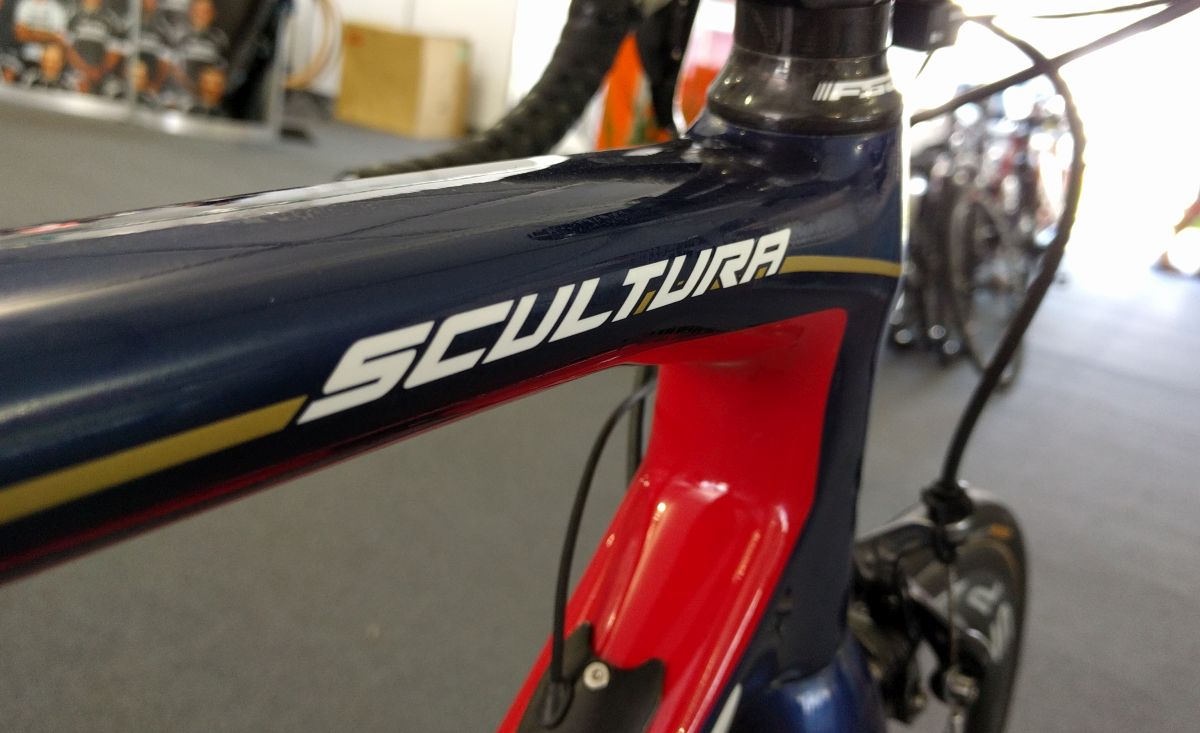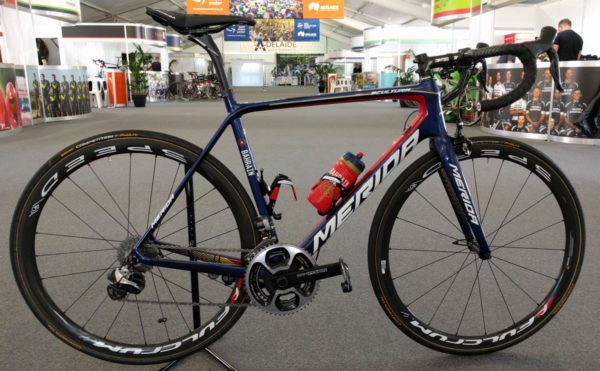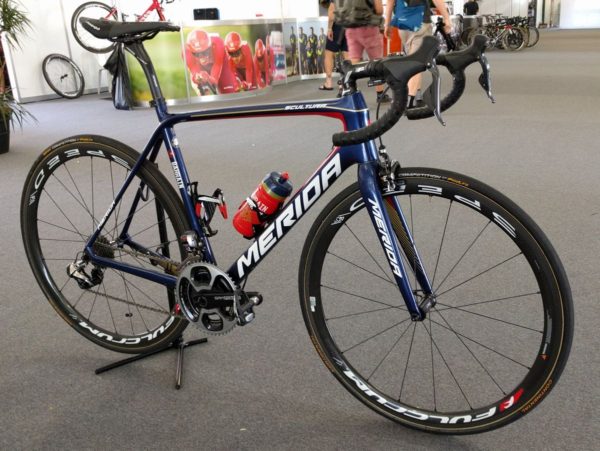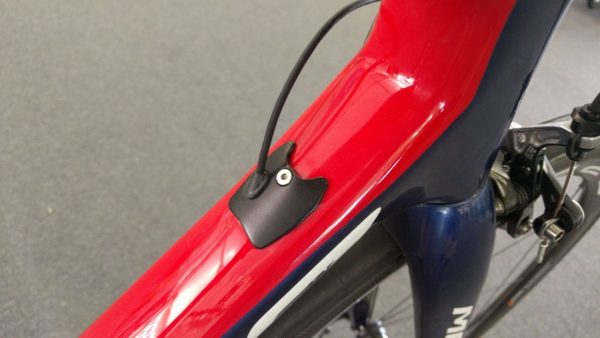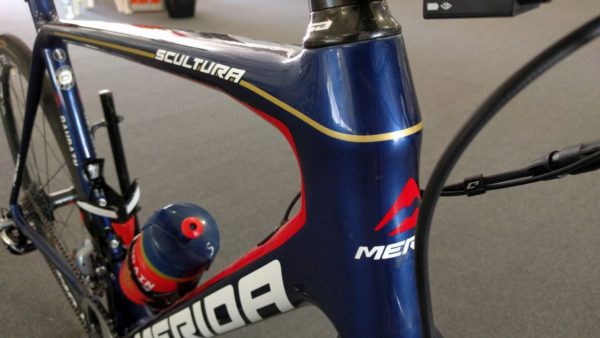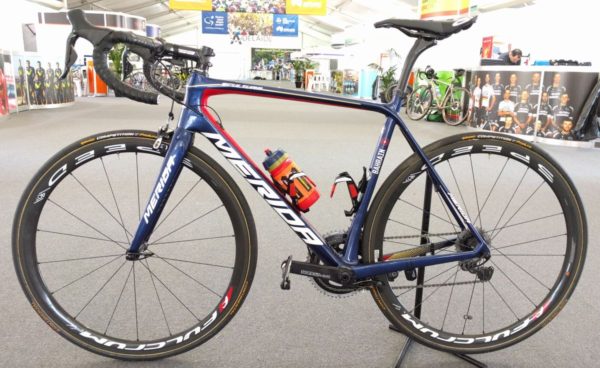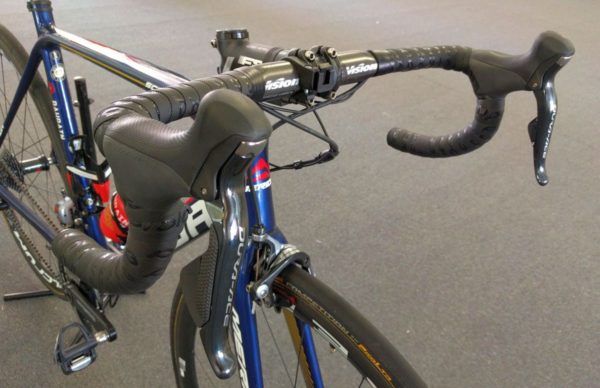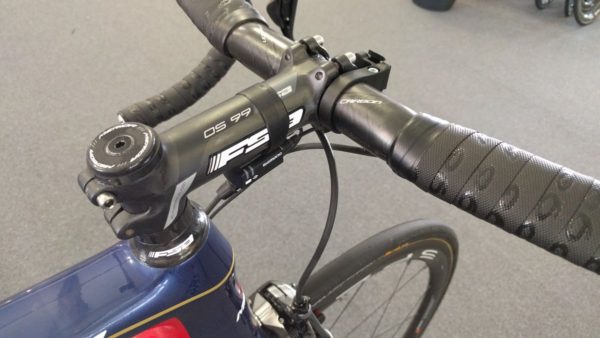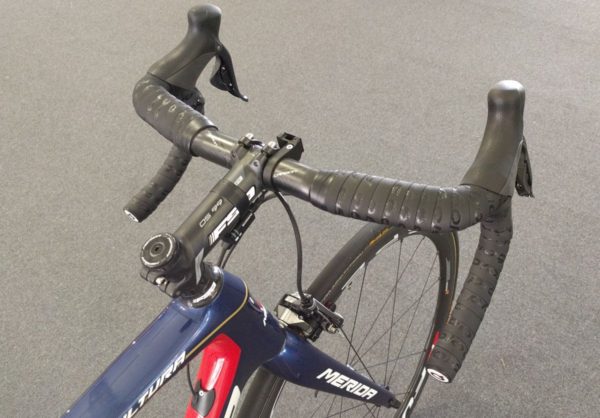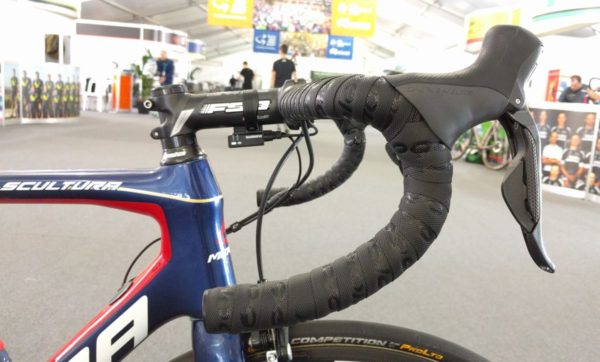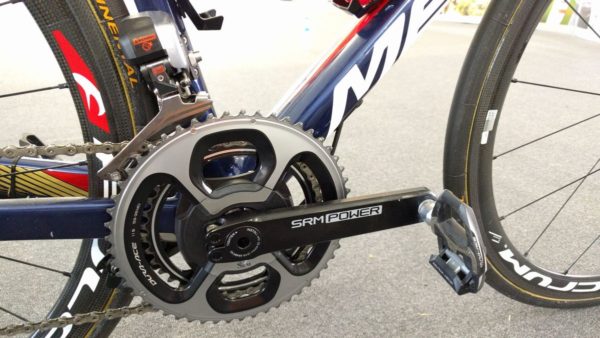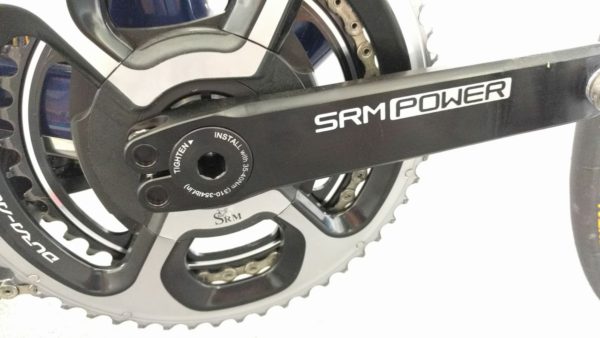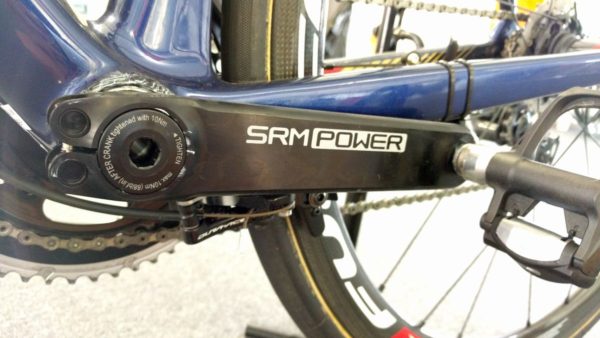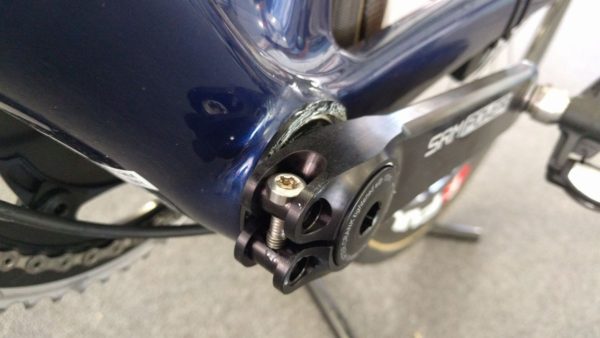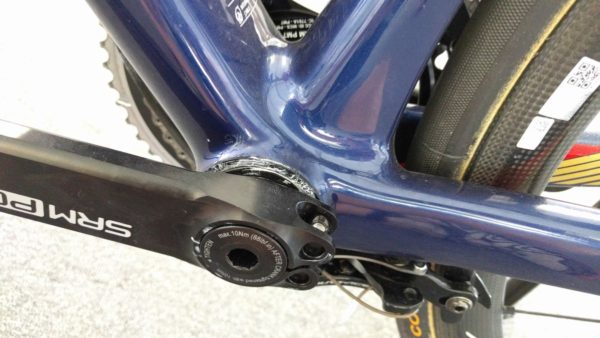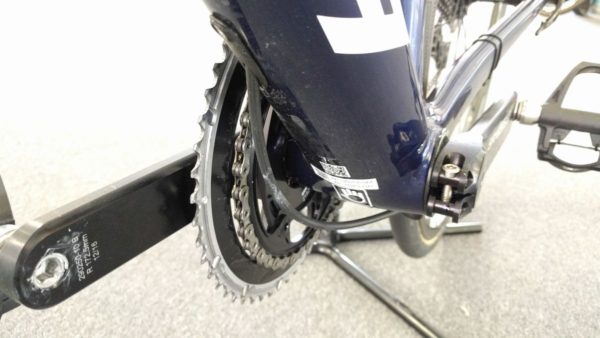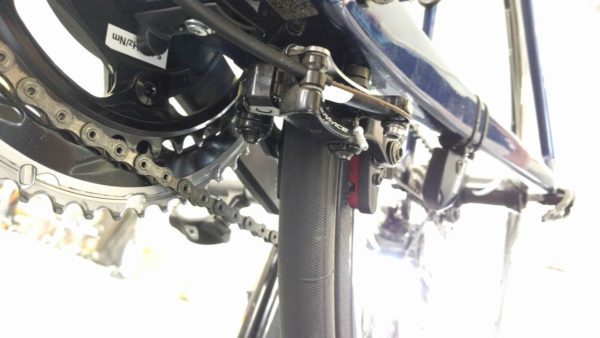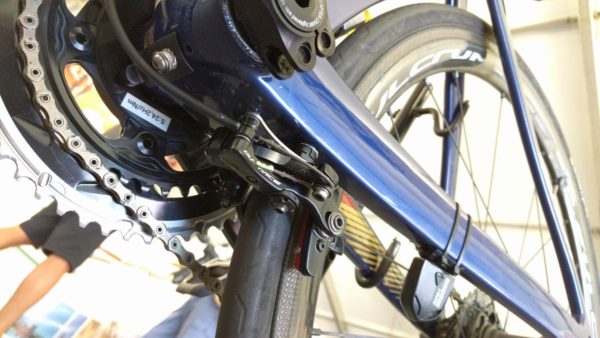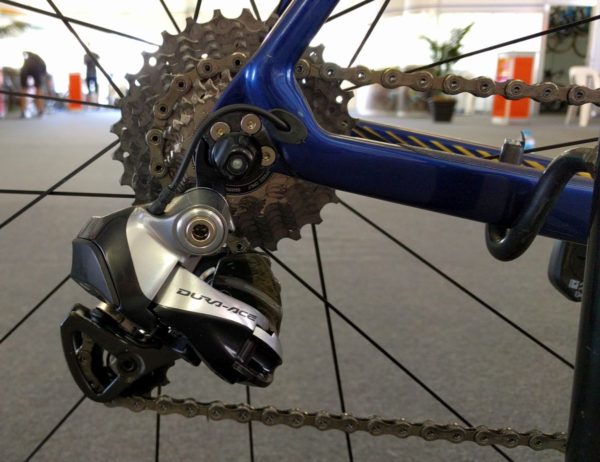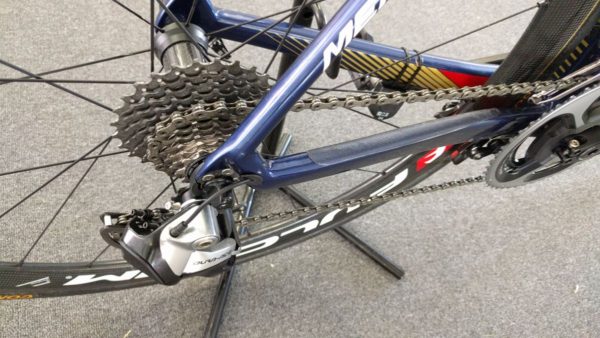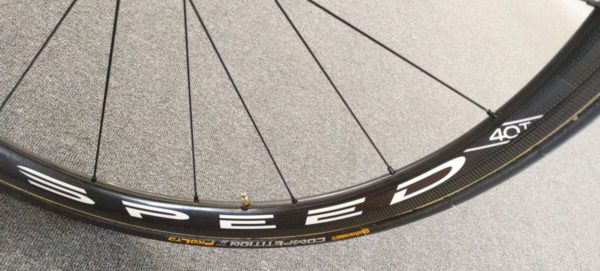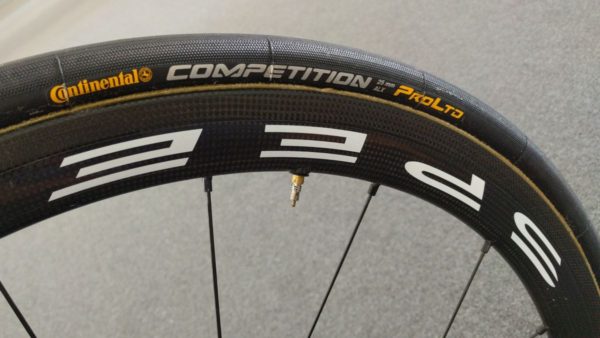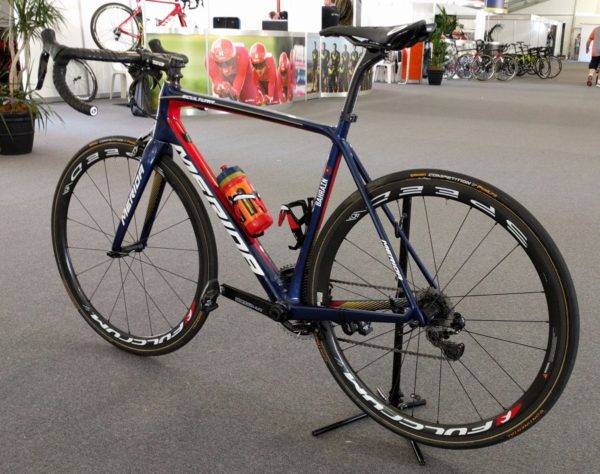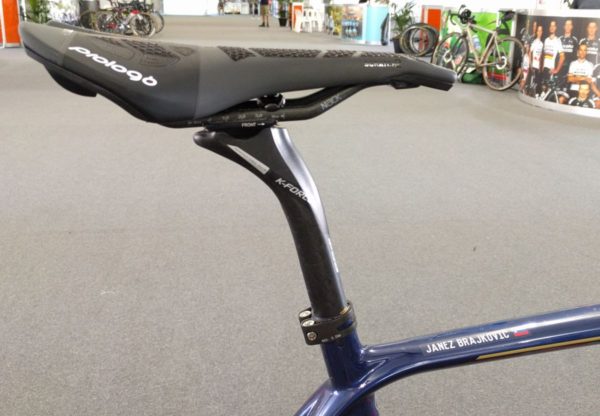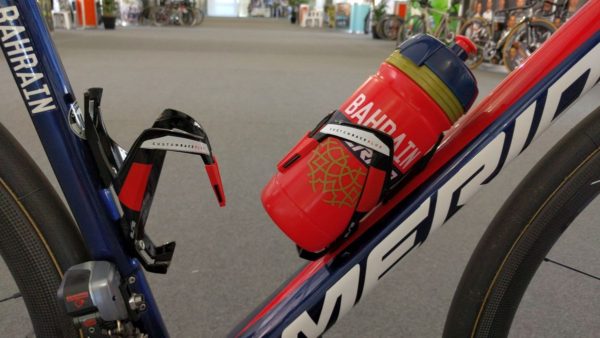Bahrain Merida’s Scultura, the last bike from our coverage of the 2017 Tour Down Under! We featured the team’s aero bike, the Merida Reacto EVO a little earlier, but this is the team’s all-rounder machine, the Scultura, which is optimized for light weight, and climbing the big mountains of the three grand-tours. The idea behind Bahrain Merida Pro Cycling Team was sparked in August 2016 by Sheikh Nasser bin Hamad Al Khalifa, a member of the Bahraini royal family. The team is financed by the government of Bahrain to promote the country worldwide.
This example of the team’s Merida Scultura is assigned to Janez Brajkovic, a 33 year old Slovenian-born racing cyclist who turned professional in 2005 with KRKA-Adria Mobil. Janez later moved to Team Discovery Channel, Astana and Team Radioshack, and even spent a two year stint most recently with USA based team, United Healthcare. For 2017, Janz returns to the World Tour peloton with Bahrain Merida. Click on through to see more of Janez Brajkovic’s Bahrain Merida Scultura.
Merida uses the company’s nano matrix carbon technology in their Scultura frames; “carbon mats are enriched with special nanoparticles which strengthen the matrix of the epoxy resin.”
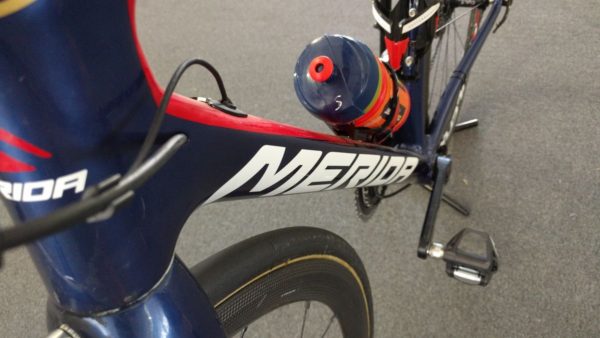
Merida feels this process enhances impact resistance by up to 40% when compared to their older methods of construction. Since 2014, all of Merida’s high-end bikes have been recipients of this technology.
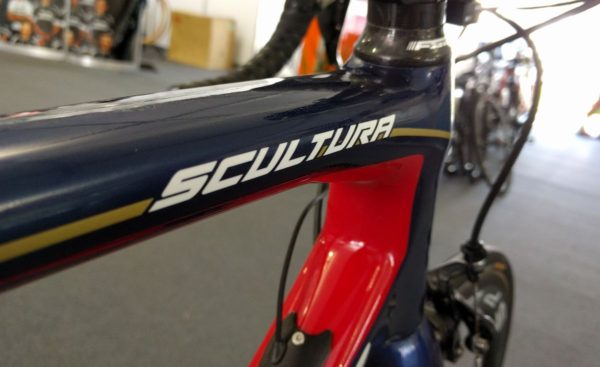
The Scultura utilizes another Merida technology, the Anti Wrinkle System. Merida utilizes specific mold inserts which they feel reduce the possibility of internal frame wrinkling. Their claimed end result is more stiffness and durability but less weight.
The Scultura uses a simple, replaceable cable port for wired electronic shifting, or mechanical shifting.
Merida refer to their tapered fork and headtube system as “X-Taper”.
Speaking of weight, Merida claims a weight of 850 grams for the Scultura frame. In 2016, Merida claimed the Scultura to be the lightest production road bike in the world.
For the 2017 season, the team chooses Shimano’s Dura-Ace 9070 electronic gear shifting system, with the latest variant, R9150, due to appear on team bikes relatively soon.
FSA / Vision provide the team’s cockpit parts – handlebars, stems and seatposts.
SRM supply the power measurement technology to the team, although the SRM PC8 head unit is not pictured in this photograph. Of interest is Janez’s choice of Vision Trimax Carbon 4D handlebars in 31.8mm x 40cm.
The Vision 4D compact handlebars feature a 10 degree forward bend designed for optimal comfort.
The cranks on Janez’s Scultura may be branded as SRM cranks, but they look awfully similar to THM’s carbon cranks, with each arm rumored to weigh a svelte 99 grams each. Shimano Dura-Ace 9000 series chainrings are mounted to the crank.
A THM design, or not? Draw your own conclusions.
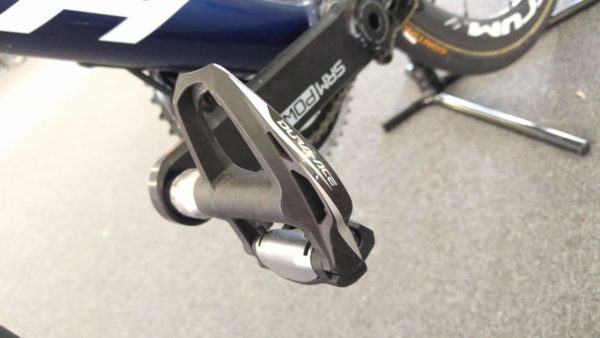 Janez puts power to the pedal with Shimano’s Dura-Ace 9000 series pedals.
Janez puts power to the pedal with Shimano’s Dura-Ace 9000 series pedals.
Until recently, bottom bracket aero brakes were popular among manufacturers. That trend was short lived, with most manufacturers reverting back to traditional brakes – with disc brakes coming in the future. Scott with their Foil and Merida with their Scultura and Reacto, remain as the solitary holdouts in the World Tour peloton with this type of brake.
The negative to this brake design – mechanics cannot access them from the team car during a race – brave mechanics are often seen hanging from team cars, making adjustments to rider’s bikes sans stopping – and dirt and grime in this area tends to accumulate on the brake.
Shimano’s 9070 series Di2 rear derailleur, soon to be retired.
Shimano Dura-Ace 9000 series 11-28 11-speed cassette.
The team’s wheels are supplied by Fulcrum; the Speed 40T tubular.
Bahrain Merida is one of many World Tour teams whose tire needs are supplied by Continental – in this case, the pro-only Competition PRO Ltd tire.
Plenty of setback and adjustability for the FSA K-Force seatpost.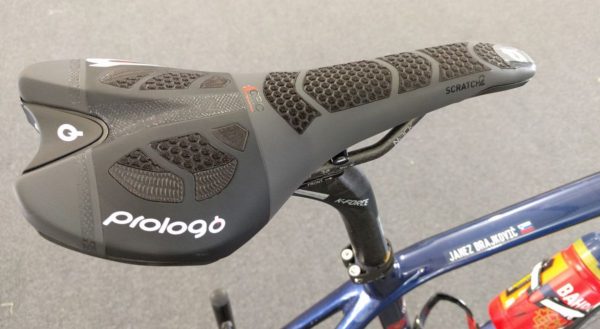
The Prologo Scratch 2 Nack saddle features the company’s CPC anti-vibration technology, carbon injected monocoque shell and Nack carbon rails.
Elite’s Custom RacePlus bottle cages complete the Bahrain Merida Scultura.
Article and photos by Gravel Cyclist. Jayson O’Mahoney is the Gravel Cyclist: A website about the Gravel Cycling Experience.
